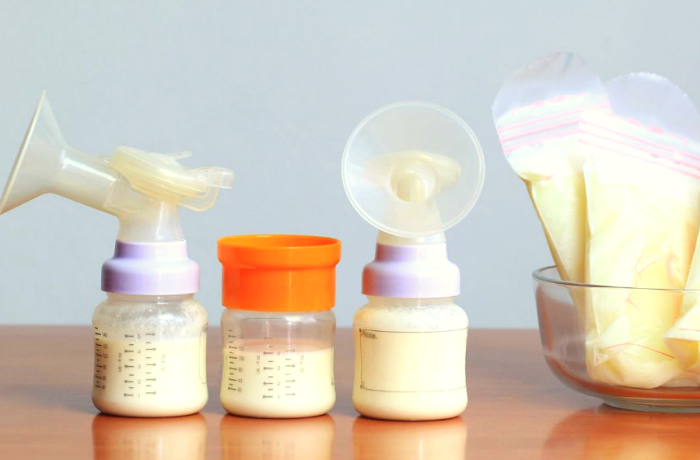Nutritious Food for Kids is Not Expensive!
by on 02/08/2025 ...

Reasonably priced foods are just as nutritious.
Nutritious food doesn’t have to mean expensive organic food found at fresh Farmer’s Market or listed under the Healthy Food at the grocery store. Nutritious foods are food that has less sodium but more taste. This is because when food is left to allow their natural taste to be released, more nutrients are present and will be absorbed better by the body.
Children’s food is often expensive due to the added vitamins, minerals and fortified flavors in them to make your child eat more of it and feel fuller. But this more often than not leads to bad eating habits because the child is used to eating a large quantity of food. Not only that, because they’ve acquired the taste of certain type of food, it can cause them to want only specific foods that are costly. And because of this, the idea of buying frozen pizzas that can be popped into the oven and serve that to them seems like an appealing idea because you want to cut down the spending cost.
This doesn’t have to happen.
All you have to do is think about what did you eat when you were growing up. Many of us didn’t have the privilege like many of our kids do today; our mothers made us food by varying what we eat and she still ensured we got healthy, clean food. Granted, many of the older generations may not be as highly aware of nutritious food as modern parents do, but it’s fairly safe to say that many of the older generations still know which food that is good and bad for their children.
Many parents make the mistake of thinking that in order to feed their kids healthy food, they have to buy the most expensive or branded items from fancy section of the mart. This unnecessary spending can be curbed if you know what are the important nutrients that your child needs. Whenever you’re deciding to buy food for your child, it’s worth to remember this – Expensive doesn’t mean quality and cheap doesn’t mean bad.
Not all parents are able to spend a huge sum of money on their kids’ food even though they would love to.
Some expensive foodstuff such as avocado, fresh blackberries, apricots, broccolis and asparagus for instance, may seem very affordable to some parents, but for other parents, especially those who are on tight budgets, may feel the pinch if they were to buy these on regular basis. It’s undeniable that some of these expensive foodstuffs are packed with good nutrients. But if you know the equivalent amount of nutrients in other foodstuff, you’re able to not only be creative with your menu, but also stretch your ringgit and still be able to make sure that your child still eats healthily.
For kids, in order to make sure that they get enough nutrients, their meals should be divided into 3 mealtimes with 2 – 3 snack times.
Below is a simple recommended nutritional 1-day menu for kids:
|
Nutrient > Mealtime v |
Main Meal |
Fruits |
Dairy |
Protein |
|
Breakfast |
Whole grain toasts & Peanut Butter |
Bananas Fruit juice |
Milk |
Turkey sausage |
|
Lunch |
Al dente pasta Olive oil Steamed vegetables e.g. cauliflower, baby carrots, baby corns etc |
Apple slices |
Yogurt |
Tofu cubes (addition to meal) |
|
Dinner |
Noodles |
Sliced fruits |
Cheese cubes |
Tofu |
For snacks, you can give them digestive biscuits, milk, cracker and plain water in between meals to keep them going. String cheese or cheese slices make great snacks too. Fried tempeh is also a good snack for your children because not only it’s cheap, it’s easy to be prepared, as well as it’s high in fiber and protein. However, because soy products are often allergenic and on top of that tempeh is fermented, it’s good to check with your pediatrician first before introducing any soy products to your child.
Even though kids have stomachs smaller than adults, their fast metabolism and constantly being active around the house tend to make them hungry faster. Be sure to give them 4 – 6 glasses of water throughout the day, you can give them more but do not let them over drink because children are more prone to water intoxication than adults.
No matter what you choose to feed your child, the four vital nutrients that he or she must have in his or her daily intake are:
PROTEIN
Protein is crucial in their daily intake since it’s for proper health development in kids. Try to serve protein even during snacks. The most appropriate measurement to ensure that your child has the right amount of protein intake everyday is by serving 16 oz of milk with 1 oz of meat.
Inexpensive proteins for kids are similar to those for adult diets. Some of these protein packed foods are regularly found at cheap prices at your local grocery store:
- Chicken breast: This white meat has lean protein that is sure to make your child feel fuller until dinner. What more, it’s easy to prepare in any dishes so it’s beneficial even for you!
- Peanut butter: Peanut butter is the perfect addition to any dish. Add them in yogurt, as vegetable dips with carrots and celeries and sauces for white meat. Refrain from buying the sugary ones and make your own. Exclude this if your child is allergic to nuts.
- Eggs: Eggs are easy to get, easy to make, and extremely delicious when paired with cheese. Not only for breakfast, but try to include eggs in other dishes. Just make sure that you serve 3 – 4 servings of eggs per week, as that is the recommended intake for kids.
IRON
Iron is also known as the vital component that makes hemoglobin or the carrier of oxygen in our blood flow. Enough iron intake helps scars and wounds that kids often get to heal by themselves quicker. However, don’t overfeed your toddler with calcium and milk, as this will lead to iron deficiency anemia since milk and calcium is known to hinder the absorption of iron.
Some of these kid-friendly iron foods are as follow:
- Red meat: It has the most iron in any food, and they’re in heme iron form, a form that is easily processed by the human body. Not only do meat tastes great with tomato sauce, it also makes great homemade pizza toppings.
- Beans: If your child cannot eat meat, substitute with lentils, chickpeas and soybeans. Tofus are great source of iron next to meat and you’d be surprised to know that they taste great when made into smoothies! Blend some tofu, vanilla yogurt and your kid’s favorite fruit and you have healthy smoothie.
- Leafy, green vegetables: The leafier, the better. Spinach is high in iron, calcium, and Vitamin C. Also, they make great vegetarian meatballs that tastes good when paired with tomato sauce. Other cheap leafy green vegetables are bok choys, pak choys, kale, water spinach, gai lan and Indian spinach.
- Orange Juice: Okay, this drink doesn’t contain iron. But if you consume OJ at the same time as iron-rich foods, the rate of iron being absorbed is higher than drinking plain water.
VITAMINS
Vitamins are vital for proper body functions. Vitamins are absorbed daily from the foods that your child eat daily, but some foods have more vitamins than others. Vitamins for children falls under these five categories:
- Vitamin A: Consuming Vitamin A foods such as carrots, papayas, and eggs are great for visions, growth, and brain developments
- Vitamin C: Rich Vitamin C foods are tomatoes, bananas, and spinach are good for iron absorption and also maintains capillaries and strengthen bones and teeth
- Vitamin D: Whole-wheat bread, tuna, and sardines are packed with Vitamin D. They’re not only tasty, but are also essential for normal growth and also to strengthen teeth and bones
- Folate or Vitamin B9: This is a water-soluble vitamin, which means that they’re great in forming red blood cell and the formation of genetic materials. They can be found in lentils, spinach, asparagus and lettuce.
- Zinc: Zinc is a mineral and it’s a very close relative to vitamins. Zinc is great for maintaining the immune system as well as preparing the sexual development for puberty. Foods that have zinc are; red meat, cocoa, beans, and mushrooms.
Now that you know the basic nutrients that your child needs, it’s time to prepare a meal for them. Mealtime can also become a rigorous exercise time for you. Running after your child to make him eat, or even to make sure he finishes whatever that is on his plate. So how do you make your child love what you made for mealtime that he will want it for the next coming mealtimes?
The answer is easy; make foods that are appealing to them. Children love pizzas, spaghetti and meatballs, nuggets, cookies, anything that’s super sweet and high in sodium. Well, you can make them in variety of totally cheap ways and it’ll be healthier since you will be the one controlling how much salt or seasonings that goes in the dish!
Find out which food that your toddler likes to eat during dinner outings at your family’s favorite restaurant and try to duplicate the recipe at home. Be sure to ask your child to help you out so they will see what goes in the dish and let them stir, or cut (using scissors) herbs. This way, when it’s mealtime, your child will feel proud in presenting the dish they made to the whole family.
Not only will you be feeding your child good food packed with nutrients, you will also spend less in buying frozen foods and take-out foods.

































